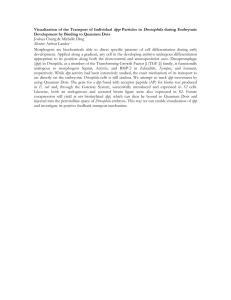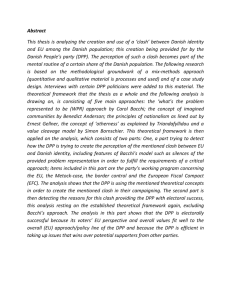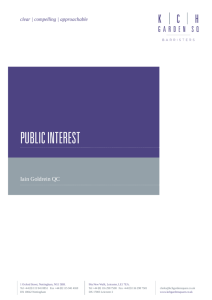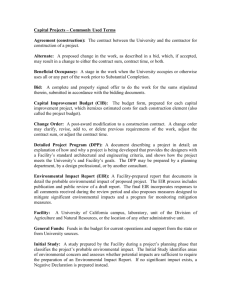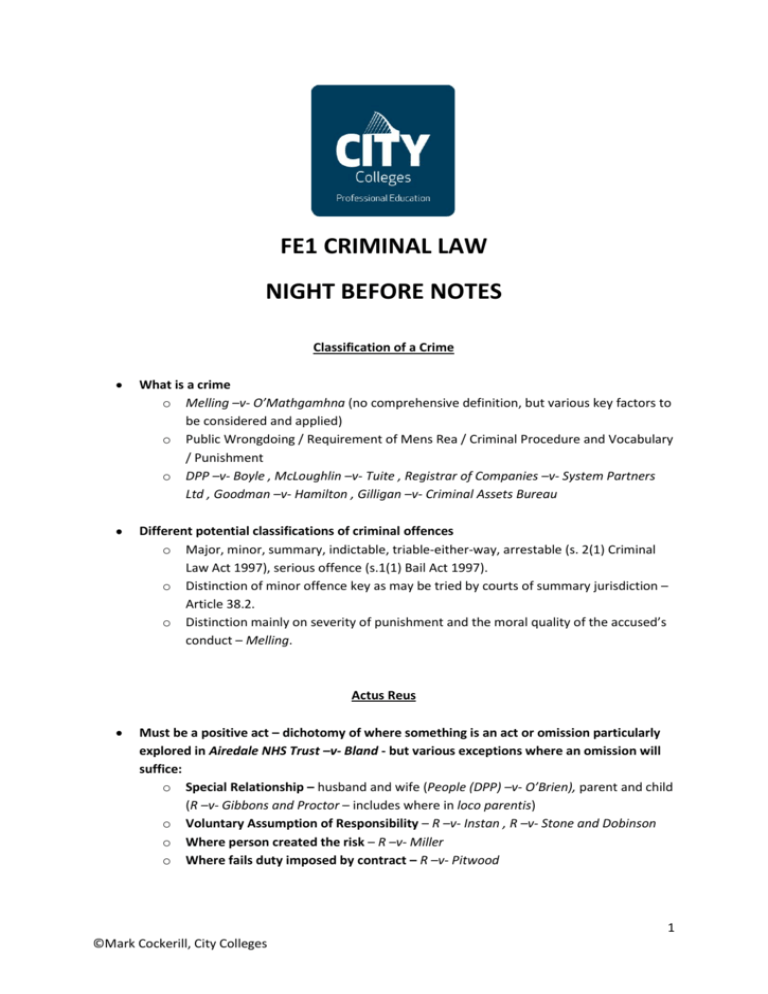
FE1 CRIMINAL LAW
NIGHT BEFORE NOTES
Classification of a Crime
What is a crime
o Melling –v- O’Mathgamhna (no comprehensive definition, but various key factors to
be considered and applied)
o Public Wrongdoing / Requirement of Mens Rea / Criminal Procedure and Vocabulary
/ Punishment
o DPP –v- Boyle , McLoughlin –v- Tuite , Registrar of Companies –v- System Partners
Ltd , Goodman –v- Hamilton , Gilligan –v- Criminal Assets Bureau
Different potential classifications of criminal offences
o Major, minor, summary, indictable, triable-either-way, arrestable (s. 2(1) Criminal
Law Act 1997), serious offence (s.1(1) Bail Act 1997).
o Distinction of minor offence key as may be tried by courts of summary jurisdiction –
Article 38.2.
o Distinction mainly on severity of punishment and the moral quality of the accused’s
conduct – Melling.
Actus Reus
Must be a positive act – dichotomy of where something is an act or omission particularly
explored in Airedale NHS Trust –v- Bland - but various exceptions where an omission will
suffice:
o Special Relationship – husband and wife (People (DPP) –v- O’Brien), parent and child
(R –v- Gibbons and Proctor – includes where in loco parentis)
o Voluntary Assumption of Responsibility – R –v- Instan , R –v- Stone and Dobinson
o Where person created the risk – R –v- Miller
o Where fails duty imposed by contract – R –v- Pitwood
1
©Mark Cockerill, City Colleges
Causation
o The accused’s conduct must have contributed to the end result in some sufficient
way – a minor cause not above a basic level of de minimis will not suffice – The
People (DPP) –v- Davis
o Accordingly, what acts would break the chain of causation from action to result?
o Medical Treatment – considered broadly across R –v- Jordan , R –v- Smith and R –vCheshire – very much resiled from Jordan. Causation found if injury still an operating
and substantial cause of death and negligence in medical treatment will only act as a
novus actus interveniens if meets Cheshire test of sufficient potency and
independence in its own right;
o Good Samaritan – People (AG) –v- McGrath
o External Influence – Impress Ltd –v- Rees
o Involuntary reactions of third parties – e.g. police returning fire on hostage-taker (R
–v- Pagett)
o Forces of Nature – R –v- Hallett
o Conduct of the Victim – R –v- Kennedy
o Eggshell Skull Rule – must take your victim as you find them, with all their beliefs,
idiosyncrasies and physiological flaws, even an ‘eggshell skull’. See generally, R-vHolland , R –v- Blaue (refusal of treatment)
Mens Rea
Must coincide with actus reus – Fagan –v- Metropolitan Police Commissioner , Kaitamaki –
v- R , R –v- Thabo Meli.
Along with Actus Reus – critical to identify in examining all offences / sections and
demonstrate as present in any problem question.
Intention
o Can be direct or indirect – age-old issue is difficulty in determining what was in
person’s mind. Natural and probable consequences of the action shall be
construed as intended
The People (DPP) –v- Douglas and Hayes
Hyam –v- DPP / R – v- Moloney / R –v- Hancock and Shankland / R –vNedrick / R –v- Woolin (explore development of though on law on ‘indirect
intention’.
Recklessness
o Objective or Subjective?
R –v- Cunningham
R –v- Caldwell
The above now found to be restricted by R –v- G
The People (DPP) –v- Murray
Knowledge
2
©Mark Cockerill, City Colleges
o
o
The People (DPP) –v- Foley
Hanlon –v- Fleming
Strict Liability
o CC –v- Ireland & Others
o Whitehouse –v- Lennon and Gay News
o Focus on assessment of the object of the legislation and seriousness of the crime key
for the determination of whether a crime is one of strict liability or not – M’Adam –
v- Dublin United Tramways Company Ltd , Shannon Regional Fisheries Board –vCavan County Council , Maguire –v- Shannon Regional Fisheries Board , CC case.
(*Further note)
Complicity in Offences
Common Design
o R –v- Anderson and Morris
o Has one party exceeded the bounds of the agreed act – The People (DPP) –v- Murray
The People (DPP) –v- Ryan , The People (DPP) –v- Eccles
o The People (DPP) –v- Cumberton (what was contemplated by one, but not
communicated, is not relevant – key is what is tacitly (or expressly) agreed)
Liability also as an Accessory
o s.7(1), Criminal Law Act 1997 – aids, abets, counsels or procures
R –v- Giannetto (the slightest encouragement can be sufficient)
Attorney General’s Reference (No.1 of 1975)
Must know or intend though that your conduct would aid, abet, counsel or
procure - The People (AG) –v- Ryan , The People (DPP) –v- Egan , The People
(DPP) –v- Madden
Withdrawal is possible – but must be complete and visible from external
behaviour – R –v- Whitehouse , R –v- Becerra and Cooper
o s.7(2), Criminal Law Act 1997 – liability for accessories after the fact
Homicide
Murder
o s.4, Criminal Justice Act, 1964 – transferred malice and statutory acknowledgement
at s.4(2) of having intended the natural and probable consequences. Case law above
on mens rea / actus reus often key.
Manslaughter
o Assault Manslaughter
R –v- Holzer
R –v- Hayward (psychic assault can be sufficient)
o Criminal Negligence Manslaughter
3
©Mark Cockerill, City Colleges
o
People (AG) –v- Dunleavy
The People (DPP) –v- Cullagh
Criminal and Dangerous Act Manslaughter
R –v- Church
People (AG) –v- Crosbie and Meehan
Infanticide
Suicide – assistances still criminalised
Euthanasia
Non-Fatal Offences Against the Person (1997 Act)
Like many of the offences, these are easily found in parts of questions, across the exam.
Key is knowing the requisite offences, the legislative provision and identification and
exploration of requirements of actus reus and mens rea for same.
Assault under s.2
o DPP –v- K (can be indirect application of force)
o R –v- Thomas
o R –v- Ireland
Assault Causing Harm under s.3(1)
o Distinct offence, considered in Minister for Justice, Equality and Law Reform –vDolny
Causing Serious Harm
o The People (DPP) –v- Kirwan
Assault with intent (s.18(1), Criminal Justice (Public Order) Act 1994)
Threats to kill or seriously harm (s.5(1) of the 1997 Act)
Syringe Attacks (s.6, s.7, s.8)
Harassment (s.10)
Poisoning (s.12)
Endangerment (s.13)
False Imprisonment (s.15) – Bird –v- Jones , Kane –v- Governor of Mountjoy Prison
Child Abduction (s.16 , s.17)
Sexual Offences
Critical to all sexual offences is inevitably the question of consent – is it full and informed
consent?
4
©Mark Cockerill, City Colleges
DPP –v- C (must be voluntary agreement or acquiescence……by a person of the age of
consent with the mental capacity….knowledge or understanding of facts material to the
act…..is necessary to be voluntary or constitute acquiescence)
s.9, Criminal Law (Rape) Amendment Act 1990 – a failure to resist does not constitute
acquiescence or consent. Key as one may be too drunk (R –v- Malone) / asleep (R –vMayers) / fearful of resisting (R –v- Olugboja / R –v- Wellard)
Fraud on nature of sexual act –R-v- Williams
Fraud on quality of act – R –v- Clarence / R-v- Currier
Fraud as to identity –DPP – v- C / Papadimitropoulos –v- R (fraud over personal
attributes will not vitiate consent)
Rape
o
o
Governed under s.2(1), Criminal Law (Rape) Act 1981. Male specific offence
against women. Mens rea is knowledge or recklessness as to consent –
however, an honest belief that consenting will hold someone not to have the
requisite mens rea – s.2(2).
DPP –v- Morgan / The People (DPP) –v- McDonagh
Sexual Assault
o s.2(1), Criminal Law (Rape) (Amendment) Act 1990 – revised the offence of
indecent assault and changed it to a gender-neutral offence – capable of
perpetration by either a man or a woman.
o Naturally an assault to begin with, but question is whether there was a sexual
nature to the assault.
o R –v- Court
o R –v- Bernier
Aggravated Sexual Assault (s.3(1) of the 1990 Act)
o Sexual assault that either (i) involves the use or threat of serious violence, or (ii)
is such as to cause injury, humiliation or degradation of a grave nature to the
person assaulted
Rape under s.4 of the 1990 Act
o Broadened the law so as not as limited by the 1981 Act. Be aware of what
elements still fall outside same.
Sexual Offences Against Children
o The Criminal Law (Sexual Offences) Act 2006 repealed and replaced the old
legislation – s.2(1) , s.3(1). Defence of honest mistake now introduced and
acknowledged – s.2(3) , s.3(5).
Incest
5
©Mark Cockerill, City Colleges
o
Punishment of Incest Act 1908 – some reform by Criminal Law (Incest
Proceedings) Act 1995
Mental Impairment
o The Criminal Law (Sexual Offences) Act 1995
Property Offences
Criminal Justice (Theft and Fraud Offences) Act 2001
Theft
o s.4(1), dishonest appropriation of property, without consent, with intention of
depriving owner of it.
o R –v- Lawrence , People (DPP) –v- O’Loughlin
o Inference of dishonesty may be drawn from conduct – DPP –v- Morrissey
o People (DPP) –v- Keating (offence of stealing in shop may be formed when goods are
taken from shelf)
o Dishonesty is a subjective assessment – emphasised under s.4(5)
Robbery
o S.14 of 2001 Act – requirement of theft accompanied by
o R –v- Dawson and James (does not need to be of a violent nature)
o R –v- Clauden (no need to resist)
o The People (DPP) –v- Mangan (force can be sufficient if induces fear in the victim)
Burglary
o S.12 of the Act – both types of burglary to be noted.
o Question of entry and whether sufficient – R –v- Ryan
o Barker –v- R – may change status to a trespasser from a visitor
o Also aggravated burglary (s.13) – where in possession of firearm, imitation firearm,
weapon or explosive – must have actus reus and mens rea of possession, as well as
that of burglary – R –v- Murphy
Other offences to be noted
o Handling Stolen Property (s.17)
o Deception Offences (s.6 , s.7)
o Making off without payment (s.8)
o Unlawful use of computer (s.9)
o False Accounting (s.10)
o Forgery (s.25-s.28)
o Criminal Damage (incl. Arson) – Criminal Damage Act 1991
6
©Mark Cockerill, City Colleges
Contempt of Court
Criminalisation key to protect against conduct that would be destructive to the general
administration of justice.
o State (DPP) –v- Walsh
o State (Keegan) –v- de Burca
Contempt in the face of the Court – Morris –v- Crown Court / Re: O’Kelly (important
judgement regarding reporters and the offence)
Scandalising the Court – ‘wild and baseless accusations of corruption so as to lower judges in
the eyes of the public’.
o People (AG) –v- O’Ryan & Boyd
Sub-judice Rule – again important from reporters perspective – nature of being unlawful to
comment on proceedings which are still in being – only factual reporting
o Kelly –v- O’Neill
Inchoate Offences
Incitement
o Persuading, coercing, including threats and pressure, or otherwise causing another
to commit a crime
Race Relations Board –v- Applin
People (AG) –v- Capaldi (….*an+ action would be an incitement if, but for it, it
would not have occurred to the party incited to commit the crime, whether
he had any particular reluctance to commit it or not…)
Must be capable of being able to commit the crime – R –v- Whitehouse
No need to communicate incitement to a person in particular – R –vMarlow
Also note Prohibition of Incitement to Hatred Act 1989 – People (DPP) –vO’Grady , People (DPP) –v- Callan (Further note)
Conspiracy
o An agreement to carry out a wrongful act – agreement being the key element of the
actus reus - R –v- Parnell , People (AG) –v- Keane. Must also be, in mens rea, the
intention to agree to commit the unlawful act and that the person would take some
steps in its furtherance (R –v- Anderson)
o Is impossibility a defence to such crime – UK, yes - DPP –v- Nock . R –v- Sew Hoy.
Canada, no - United States of America –v- Dynar.
o Also offence of ‘conspiracy to corrupt public morals’ seen in Knuller –v- DPP , SPUC –
v- Open Door Counselling Ltd . Rejected in Australia – R –v- Cahill
Attempt
o People (AG) –v- Thornton – an attempt is an act done by the accused with a specific
intent to commit a crime, which must go beyond mere preparatory acts.
7
©Mark Cockerill, City Colleges
o
Key therefore is whether the act is sufficiently proximate to the commission of the
crime in order to constitute an offence
R –v- Jones
R –v- Campbell
Irish law not very generous on question of proximity, see Thornton , The
People (AG) –v- Sullivan
Mens rea for the specific substantive offence must also be present – The
People (DPP) –v- Douglas and Hayes
Defences
Vital area to prepare – must be able to explore individual defences in detail for an essay
style question focused on one in particular and also to bring same in and analyse as part of
a problem based question focusing on someone’s ‘criminal liability’
Lawful Use of Force
o Non-fatal offences – s.18 – 20 of the 1997 Act
o Fatal – necessity and proportionality – may be full defence, or reduce murder to
manslaughter (People (AG) –v- Dwyer)
People (AG) –v- Keatley
People (DPP) –v- Commane
R –v- McInnes (not viable if opportunity to retreat)
People (AG) –v- Coffey , DPP for Northern Ireland –v- Browne (no use if
ulterior motive / have created the situation)
The People (DPP) –v- Barnes
Insanity & Automatism
o Substantial reform by the Criminal Law (Insanity) Act 2006 – old law seen from R –vM’Naghten
o Disease of the mind a key criteria – analysed in various cases, R –v- Kemp , Bratty –
v- AG for Northern Ireland , R –v- Quick (hypoglycaemia – external factor –
automatism) , R –v- Hennessy (hyperglycaemia – internal factor – insanity)
o Must cause a defect of reason
People (DPP) –v- O’Donnell
People (AG) –v- Hayes
o Irresistible impulse – codified by s.5(1) of the 2006 Act – Doyle –v- Wicklow County
Council
o Diminished Responsibility – s.6 of 2006 Act re: murder.
o Must cause a defect of reason
o External influences causing a defect of reason – see diabetes cases mentioned above
as examples. Some debate as to ‘disassociative state’ and whether insanity /
automatism defence – R –v- Falconer , R –v- Stone , R –v- Rabey
8
©Mark Cockerill, City Colleges
Intoxication
o Was person so intoxicated so as to be incapable of forming the mens rea required.
o People (AG) –v- Manning – mere drunkenness is not sufficient
o R –v- Lipman – can be intoxication by drink or drugs
o Distinction to be drawn between crimes of specific and basic intent, as defence not
open for reliance for crimes of basic intent
DPP –v- Beard
DPP –v- Majewski
The People (DPP) –v- Reilly
o Self-induced intoxication / ‘Dutch Courage’ not open for the defence to be relied
upon – AG for Northern Ireland –v- Gallagher
Duress
o Not suitable as defence for murder, The People (AG) –v- Whelan
o Did it overbear the ordinary power of human resistance? Was there an opportunity
for the will to reassert itself? Was there an opportunity to escape?
R –v- Howe (objective standard)
R –v- Hudson & Taylor (must be a level of immediacy)
R –v- Conway (proximity of relationship to threatened person may also be
an issue
R –v- Hurley and Murray
DPP for Northern Ireland –v- Fitzpatrick (defence unavailablle where person
has voluntarily exposed themselves to the risks inherent)
R –v- Martin
R –v- Abdul-Hussain
o Note for an essay question, the comments of Law Reform Commission on its
Consultation Paper on Duress and Necessity
Necessity
o Classical exposition of limit and scope of defence seen in R –v- Dudley and Stephens
o See also Re: A (Children)
Provocation (*addressed in Chapter on Homicide)
o Defence only to murder – for other crimes only a factor to be considered when
passing sentence. Factors of key assessment are the extent of loss of self-control
caused by the provocation and the reasonableness of the reaction to the
provocation:
The People (DPP) –v- MacEoin
The People (DPP) –v- Mullane
The People (DPP) –v- Kelly
The People (DPP) –v- Delaney
Mistake
o Ignorance of the law / mistaken understanding is no defence – R –v- Reid , People
(DPP) –v- Healy
9
©Mark Cockerill, City Colleges
o
Mistake on facts though may justify a defence in circumstances – e.g. honest
mistake as to force / protection of persons / whether person was consenting to
sexual intercourse (*see Chapter on Sexual Offences)
People (AG) –v- Dwyer
DPP –v- Morgan
Unconstitutionality
o CC –v- Ireland
Procedural Elements in Criminal Law
•
Courts of Criminal Jurisdiction in Ireland – be able to run through and explain same and the
applicable jurisdiction for each. (*Further Note)
•
Arrest – without warrant (s.4, Criminal Law Act 1997)
o Only in respect of arrestable offences
Arrest – with warrant
o Structure of same on basis of ‘complaint’, must be raised and presented in good
faith
•
•
Rights and general principles
o To be informed of basis – DPP –v- Connell , The People (DPP) –v- Walsh
o Reasonable Expedition – The People (DPP) –v- Boylan , The People (DPP) –v- Cleary
o To be charged at first reasonable opportunity – Dunne –v- Clinton
o Reasonable access to legal representation
•
Detention (note time periods, requirements for each provision)
o s.4, Criminal Justice Act 1984
o s.30, Offences Against the State Act 1939 – The People (DPP) –v- Byrne / The People
(DPP) –v- Kelly / The People (DPP) –v- Farrell
o s.2, Criminal Justice (Drug Trafficking) Act 1996
o s.50, Criminal Justice Act 2007
10
©Mark Cockerill, City Colleges
•
Presumption of Innocence
o Article 38.1
• Woolmington –v- DPP
• The People (DPP) –v- D.O’T
• O’Leary –v- AG
• Hardy –v- Ireland
•
The Right to Silence
o Being chipped away at by legislation?
o Heaney –v- Ireland – s.52, Offences Against the State Act 1939
o Heaney and McGuiness –v- Ireland (on appeal to ECHR)
o Rock –v- Ireland – s.18 / 19, Criminal Justice Act 1984
o Now amended by ss. 28 and 29, Criminal Justice Act 2007
•
Bail
o
o
People (AG) –v- O’Callaghan
Bail Act 1997, amended by the Criminal Justice Act 2007
11
©Mark Cockerill, City Colleges

